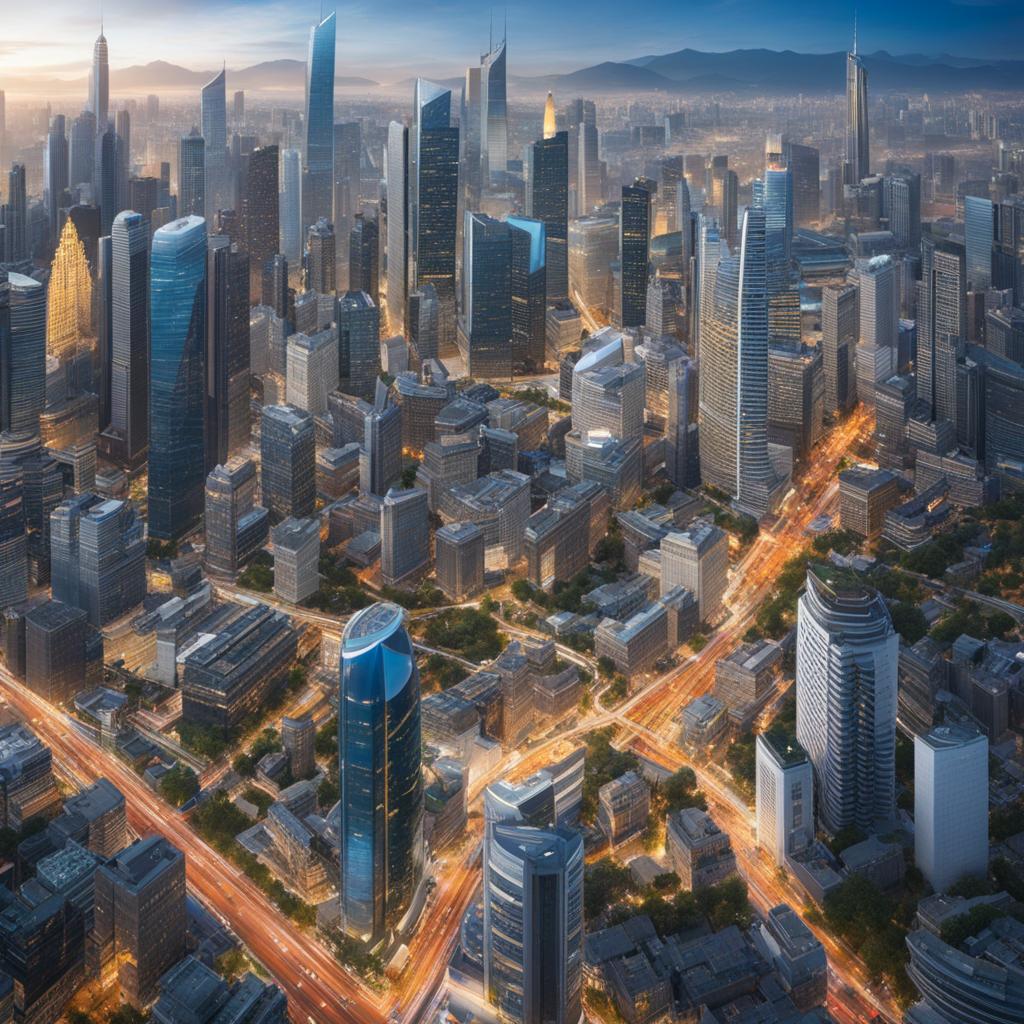Welcome to our article on the challenges and opportunities of developed economies. We understand that these economies can be complex and daunting to navigate, but we are here to explore the prospects that lie ahead and strategies to drive economic growth.
As we delve into the complexities of developed economies, we will examine the unique challenges faced by these economies. From income inequality to aging populations and environmental sustainability, these challenges present a range of obstacles that must be overcome to ensure sustainable economic growth.
Despite these challenges, we believe that developed economies offer incredible prospects for growth. Technological advancements, innovation, and globalization are just a few of the areas that contribute to the continued prosperity of these economies. By identifying and capitalizing on these opportunities, developed economies can thrive and adapt to changing global conditions.
At the heart of our discussion is the drive to promote economic growth in developed economies. We understand that this requires a strategic approach and pragmatic policies to navigate the intricate landscape of these economies. Through our exploration of the challenges and opportunities of developed economies, we hope to provide insights that can contribute to the continued progress of these economies.
Join us as we delve deeper into the intricacies of developed economies and uncover strategies to drive sustainable economic growth.
Uncovering the Complexities of Developed Economies
In developed economies, we encounter a range of complexities that hinder sustainable growth. These challenges are not insurmountable, but they require careful consideration and strategic planning.
Challenges Faced by Developed Economies
One significant challenge faced by developed economies is income inequality. According to data from the OECD, income inequality has been on the rise in most developed countries since the 1980s. This inequality not only has negative social implications but also poses an economic challenge. When a significant proportion of the population is unable to access resources and opportunities, it can stifle economic growth.
Another challenge is the aging population in many developed economies. As advances in healthcare and medical technologies enable people to live longer, societies are faced with the challenge of providing care and services for an increasing number of elderly citizens. The strain on healthcare systems and the reduced workforce participation that often accompanies an aging population can negatively impact economic growth.
Lastly, environmental sustainability is an increasingly pressing challenge for developed economies. The urgent need to address climate change, reduce carbon emissions, and protect natural resources requires significant investments in innovation and infrastructure. However, these investments can be costly and often require large-scale collaboration across sectors.
Overcoming Complexity for Sustainable Growth
Despite these challenges, there are opportunities to overcome complexity and drive sustainable growth in developed economies. One key strategy is to invest in education and training programs that equip citizens with the skills necessary to thrive in a rapidly changing economy. This investment can help reduce income inequality and ensure that all citizens can access opportunities for growth.
Additionally, embracing technological advancements and innovation can help developed economies stay competitive. By investing in research and development and creating an environment that fosters entrepreneurship, developed economies can drive growth and maintain their positions as global leaders.
Finally, addressing environmental sustainability requires significant investment and collaboration across sectors. However, it can also spur innovation and create new opportunities for growth. By investing in renewable energy, developing sustainable infrastructure, and promoting green technologies, developed economies can drive sustainable growth and contribute to a more environmentally conscious global economy.
In conclusion, the complexities of developed economies require careful consideration and strategic planning. By addressing challenges such as income inequality, an aging population, and environmental sustainability, developed economies can drive sustainable growth. We must invest in education and training, embrace innovation, and collaborate to create a more environmentally conscious economy. By doing so, we can navigate these complexities and create a prosperous future for all.
Seizing Opportunities for Growth in Developed Economies
As we discussed earlier, developed economies face a range of challenges, but they also have significant prospects for growth. To continue prospering, these economies must capitalize on the opportunities available.
Technological Advancements
One of the most significant opportunities for growth in developed economies is technological advancements. The development of new technologies and innovative processes can drive efficiencies, reduce costs, and increase productivity across multiple industries.
“Technology is the driving force behind economic growth in the twenty-first century.” – Mark Rutte
For instance, the rise of artificial intelligence (AI) and machine learning technologies has the potential to revolutionize various sectors such as healthcare, education, finance, and transportation. By leveraging these technologies, businesses can streamline operations, enhance customer experiences, and create new revenue streams.
Innovation
Innovation is another key driver of growth in developed economies. Companies that innovate and develop new products and services can tap into new markets, increase revenue, and gain a competitive advantage.
Innovation doesn’t just happen within the private sector. Governments can also play a significant role in fostering innovation through research and development funding, grants, and tax incentives. By supporting research and innovation, governments can spur economic growth and job creation.
Globalization
Globalization can also present opportunities for developed economies. As businesses expand their operations across borders, they can tap into new markets, access new resources, and gain a competitive advantage.
However, globalization also poses challenges, such as increased competition and regulatory complexities. Thus, businesses must take a strategic approach to globalization, carefully assessing risks and opportunities.

The Prospects of Developed Economies
Overall, the prospects for growth in developed economies remain strong. These economies have a well-educated workforce, advanced infrastructure, and established institutions that support economic growth. Furthermore, the adoption of new technologies and innovative practices can enable these economies to remain competitive in an ever-changing global economy.
However, to fully realize their growth potential, developed economies must address the challenges they face. By doing so, they can continue to drive economic growth, create new jobs, and foster innovation and prosperity for years to come.
Conclusion
As we have explored in this article, developed economies face both challenges and opportunities. It is crucial to address the complexities faced by these economies, such as income inequality, aging populations, and environmental sustainability. By doing so, we can identify areas for improvement and ensure that economic growth is sustainable.
At the same time, it is essential to seize the prospects available for growth in developed economies. Advancements in technology, innovation, and globalization present opportunities for continued prosperity. By investing in these areas, we can ensure that developed economies remain competitive and adaptable to changing global conditions.
It is critical for policymakers and businesses to work together to navigate the intricacies of developed economies. Through strategic planning and the implementation of pragmatic policies, we can promote innovation and resilience within these economies. By doing so, we can drive sustainable economic growth and contribute to global economic progress.
Overall, the challenges and opportunities facing developed economies are complex and multifaceted. However, by working together and staying adaptable, we can ensure that these economies continue to thrive in the years to come.




